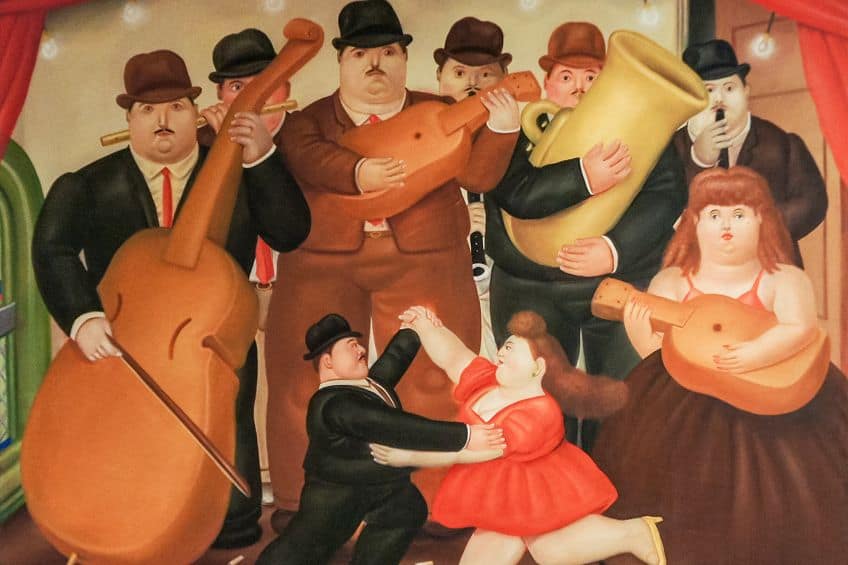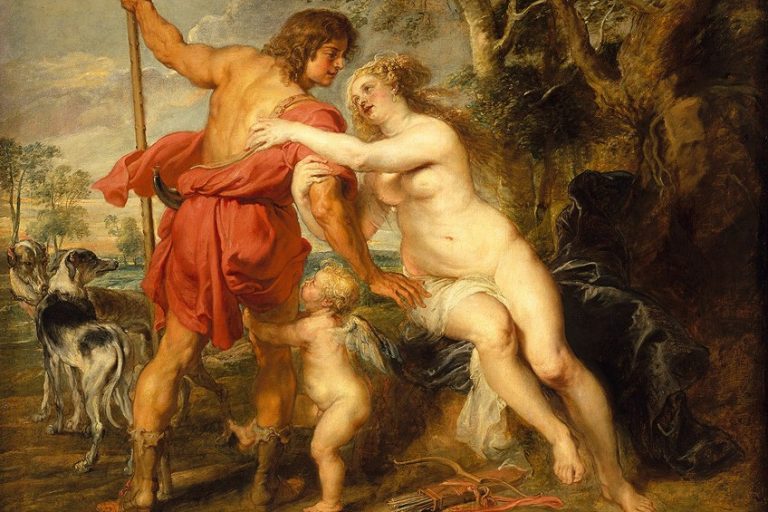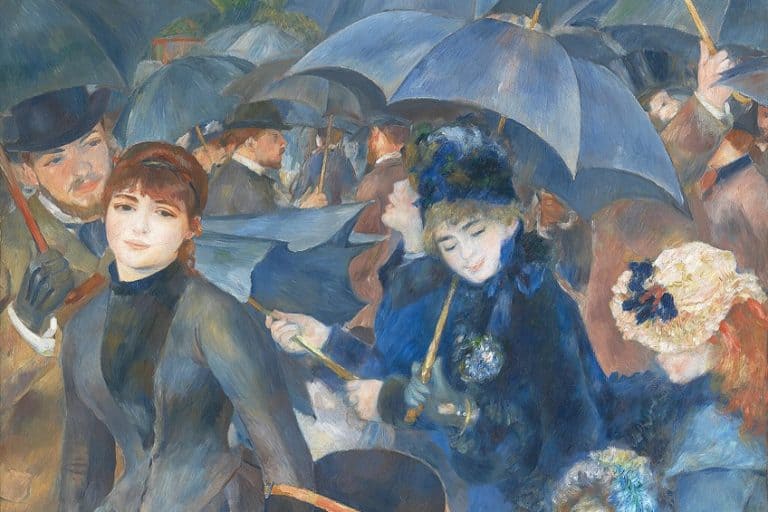“Dancing in Colombia” by Fernando Botero – An Artwork Analysis
Dancing in Colombia by Fernando Botero encapsulates the vibrant spirit and cultural richness of Colombia through the artist’s iconic style. Botero, known for his exaggerated figures and playful compositions, brings to life the joyous rhythm of Colombian dance traditions in this captivating artwork. With his characteristic emphasis on volume and form, Botero’s dancers exude a sense of celebration and movement that is both charming and dynamic. Through Dancing in Colombia, Botero not only pays homage to his native country’s dance heritage but also invites viewers into a world of color, music, and infectious energy that defines Colombian culture.
Key Takeaways
- Botero’s Dancing in Colombia portrays a rich tableau of Colombian culture and festivity.
- The artist’s exaggerated forms and vibrant tones are a hallmark of his style and serve to convey deeper meanings.
- The painting is an important cultural artifact within both Colombian heritage and the wider art community.
Fernando Botero and His Signature Style
| Artist | Fernando Botero (1932 – 2023) |
| Date Created | 1980 |
| Medium | Oil on canvas |
| Genre | Figurative art and Colombian art |
| Period/Movement | Contemporary |
| Dimensions (cm) | 188 x 231.1 |
| Series/Versions | Single version, no known series |
| Where Is It Housed? | The Metropolitan Museum of Art, New York City, United States |
| What It Is Worth | Estimated value varies, depending on the market |
Fernando Botero, a renowned Colombian artist, captures the essence of his country’s vibrant culture through his masterpiece, Dancing in Colombia. Characterized by his distinct style of voluminous figures and a bright color palette, Botero’s painting brings to life a dynamic café scene filled with musicians, dancers, and the iconic jukebox. Each character is infused with a sense of grandeur and exaggerated form, which is not just whimsical but a channel for deeper social and political commentary.

Dancing in Colombia serves as a reflection of the everyday life and traditions of Colombia, shed through the lens of Botero’s childhood memories and keen observations. The painting goes beyond mere festivity to embody the spirit of Colombia’s societal fabric. Botero’s work, with its unique stylistic approach, not only represents Colombian art but also contributes significantly to the global art scene, resonating with audiences due to its universality and profound thematic expressions.
Boterismo: A Unique Artistic Perspective
Botero’s unique method centers on the expansion and magnification of his subjects. The artist employs volume as a tool for stylistic distortion, which is a hallmark of his signature style. Paintings such as Dancing in Colombia exemplify this technique, with overstated proportions creating a powerful visual impact.
- Subject matter: Often reflects everyday scenes infused with a sense of satirical rendering.
- Themes: Botero’s artwork confidently juxtaposes the vitality of life with a penetrating observation of social dynamics.
- Composition: His use of space and proportion often leads to interpretations aligned with Magic Realism.
The bold and vibrant colors in Botero’s paintings contribute to their famous appearance. His style, while aesthetically pleasing, does not shy away from challenging subjects. Boterismo often presents a dualistic nature where the beauty of the art invites closer examination of deeper, sometimes darker societal reflections. Fernando Botero’s work transcends mere visual appeal, carrying thematic depth that invites dialogue on the human condition.
Through his exaggerated forms and satirical renderings, Botero has secured a unique and unassailable position in contemporary art.
Formal Analysis
In this analysis, the painting Dancing in Colombia by Fernando Botero will be scrutinized for its artistic elements and the thoughtful application of various techniques. The painting is an oil on canvas work that stands as a strong representation of Botero’s iconic style and his reflections on Colombian culture.
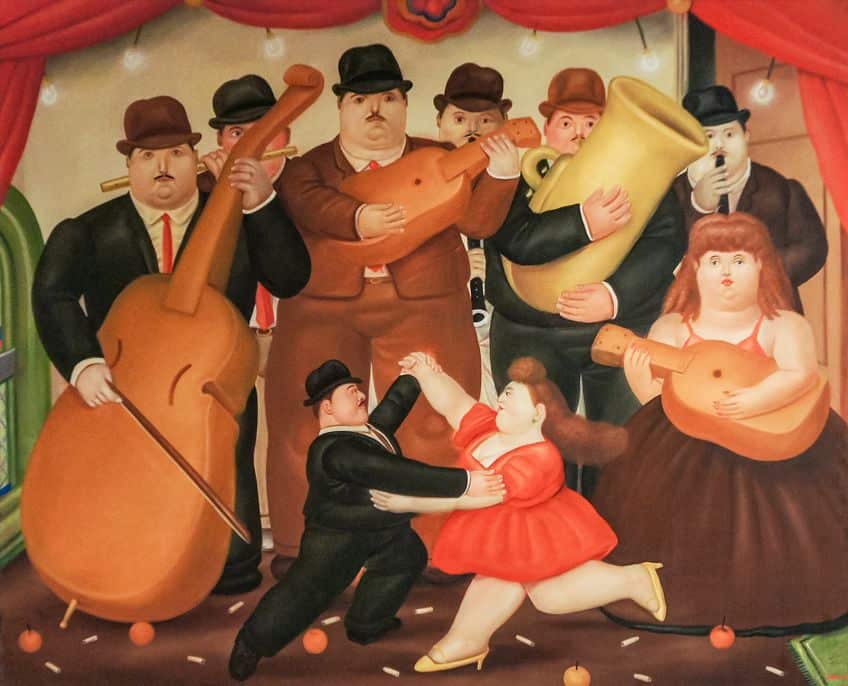
Subject Matter
The subject matter of Dancing in Colombia centers on a vibrant social scene. It captures musicians and dancers within a café environment, aiming to depict a slice of Colombian life.
The painting’s lively narrative draws the viewer’s attention to themes of leisure and festivity, typical of Botero’s focus on everyday life in his native Colombia.

Use of Color and Line
Botero’s use of color in Dancing in Colombia is characterized by warm tones that evoke the energy of a social gathering. Reds, browns, greens, and blacks dominate the palette, with subtle color transitions that suggest depth and volume.
In terms of line, Botero employs smooth, rounded delineations to outline figures and objects, adding to the painting’s sense of rhythm and movement.

Use of Shape
In Dancing in Colombia, the use of shape is distinctive. Botero plays with proportion by depicting his figures with exaggerated, voluminous forms, a technique that contributes to a sense of roundness and physical presence.
The dancers and musicians are characterized by their oversized bodies, which has become a hallmark of Botero’s stylistic approach, often referred to as “Boterismo.”
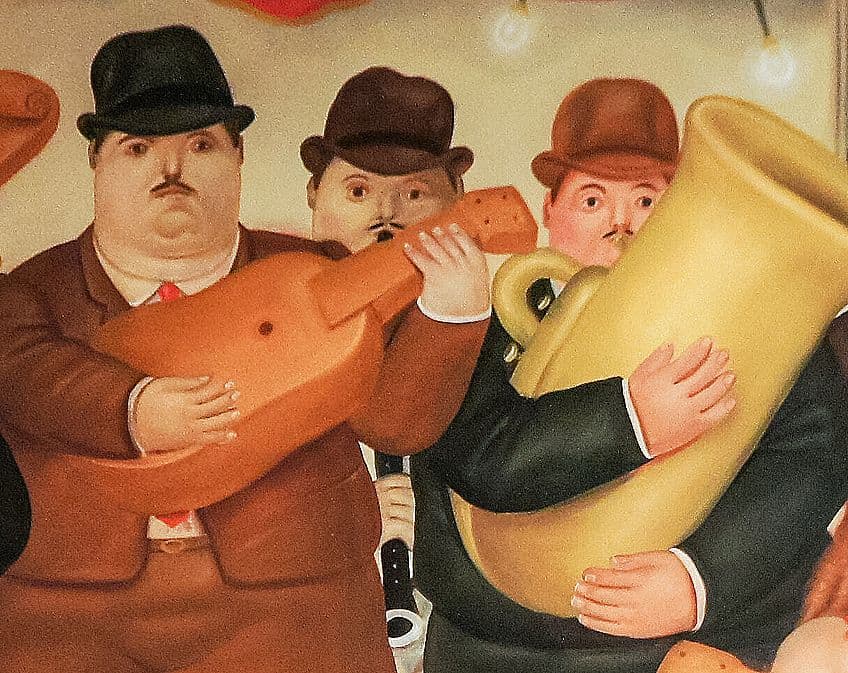
Symbolism and Narrative
Botero infuses the painting with rich symbolism and narrative. Each element, from the corpulent dancers to the crowded room, can be seen as a reflection on societal norms and the celebration of cultural identity. The painting invites viewers to consider the deeper social and political commentary behind the apparent joviality.
Through this festive portrayal, Dancing in Colombia becomes a canvas where the narrative goes beyond mere representation, prompting a closer reflection on Colombian traditions and social dynamics.

Influence of Botero’s Artwork
Fernando Botero’s profound impact on art is marked by his pieces featured worldwide and his iconic Dancing in Colombia that leaves a lasting legacy on Colombian culture and art history. Fernando Botero, an artist hailing from Medellín, Colombia, has achieved global recognition for his signature style, known as “Boterismo,” which paints subjects in exaggerated volumes that suggest opulence and solidity.
His art is profoundly intertwined with Colombian history and culture, providing a depiction of everyday life in Colombia that captures the attention of both art critics and the public.
The Metropolitan Museum of Art in New York City is among the prestigious institutions which have exhibited Botero’s work. His artworks resonate with the Latin American ethos, and their place in world-renowned museums underscores their global appeal. Botero’s sculptures have also found a home in public spaces, further solidifying his mark on the global art scene.
Legacy of Dancing in Colombia
Dancing in Colombia is not merely a painting; it’s a cultural emblem that encapsulates the vibrant energy and color of Colombian life. Fernando Botero’s depiction of dancers in movement reflects an aspect of Colombian culture that is celebrated within and beyond the nation’s borders. By capturing the essence of Colombian dance tradition through his unique artistic lens, Botero has firmly established this work among his masterpieces.

Botero’s influence extends beyond the canvas to impact Latin American art as a whole. His distinctive aesthetic has created a visual lexicon that speaks both to the specificity of Colombian art and to a broader Latin American identity. This influence cements Dancing in Colombia as a crucial component of Botero’s legacy, and an emblem of Latin American culture thriving in the history of art.
Dancing in Colombia by Fernando Botero serves as a testament to the artist’s ability to capture the essence of Colombian culture with his distinctive artistic vision. Through his exaggerated figures and lively compositions, Botero brings the joy and energy of Colombian dance traditions to life on canvas. The vibrant colors, dynamic movement, and inherent sense of celebration in the artwork reflect Botero’s deep connection to his homeland’s rich cultural heritage. Dancing in Colombia not only showcases Botero’s mastery as an artist but also invites viewers to immerse themselves in the rhythmic and festive spirit that defines Colombia’s dance scene.
Frequently Asked Questions
What Is the Symbolism Behind Fernando Botero’s Dancing in Colombia Painting?
In Dancing in Colombia, Botero’s use of exaggerated and rounded figures is intentional, symbolizing abundance and emphasizing the joy and vibrancy of Colombian culture. The crowded, lively scene captures the essence of Colombian social gatherings, highlighting how dance is intricately woven into the fabric of daily life.
In What Ways Did Fernando Botero’s Artwork Impact Colombian Culture?
Fernando Botero’s artwork, including Dancing in Colombia, has had a significant impact on Colombian culture by bringing international attention to the nation’s traditions and social nuances. Botero’s distinctive style and thematic focus on Colombian life have helped to shape perceptions of Colombia as a place rich in tradition, celebration, and artistic expression.
Isabella studied at the University of Cape Town in South Africa and graduated with a Bachelor of Arts majoring in English Literature & Language and Psychology. Throughout her undergraduate years, she took Art History as an additional subject and absolutely loved it. Building on from her art history knowledge that began in high school, art has always been a particular area of fascination for her. From learning about artworks previously unknown to her, or sharpening her existing understanding of specific works, the ability to continue learning within this interesting sphere excites her greatly.
Her focal points of interest in art history encompass profiling specific artists and art movements, as it is these areas where she is able to really dig deep into the rich narrative of the art world. Additionally, she particularly enjoys exploring the different artistic styles of the 20th century, as well as the important impact that female artists have had on the development of art history.
Learn more about Isabella Meyer and the Art in Context Team.
Cite this Article
Isabella, Meyer, ““Dancing in Colombia” by Fernando Botero – An Artwork Analysis.” Art in Context. April 2, 2024. URL: https://artincontext.org/dancing-in-colombia-by-fernando-botero/
Meyer, I. (2024, 2 April). “Dancing in Colombia” by Fernando Botero – An Artwork Analysis. Art in Context. https://artincontext.org/dancing-in-colombia-by-fernando-botero/
Meyer, Isabella. ““Dancing in Colombia” by Fernando Botero – An Artwork Analysis.” Art in Context, April 2, 2024. https://artincontext.org/dancing-in-colombia-by-fernando-botero/.


